Year 4 Assembly
Monday 22nd of April

Year 4 Assembly
Monday 22nd of April
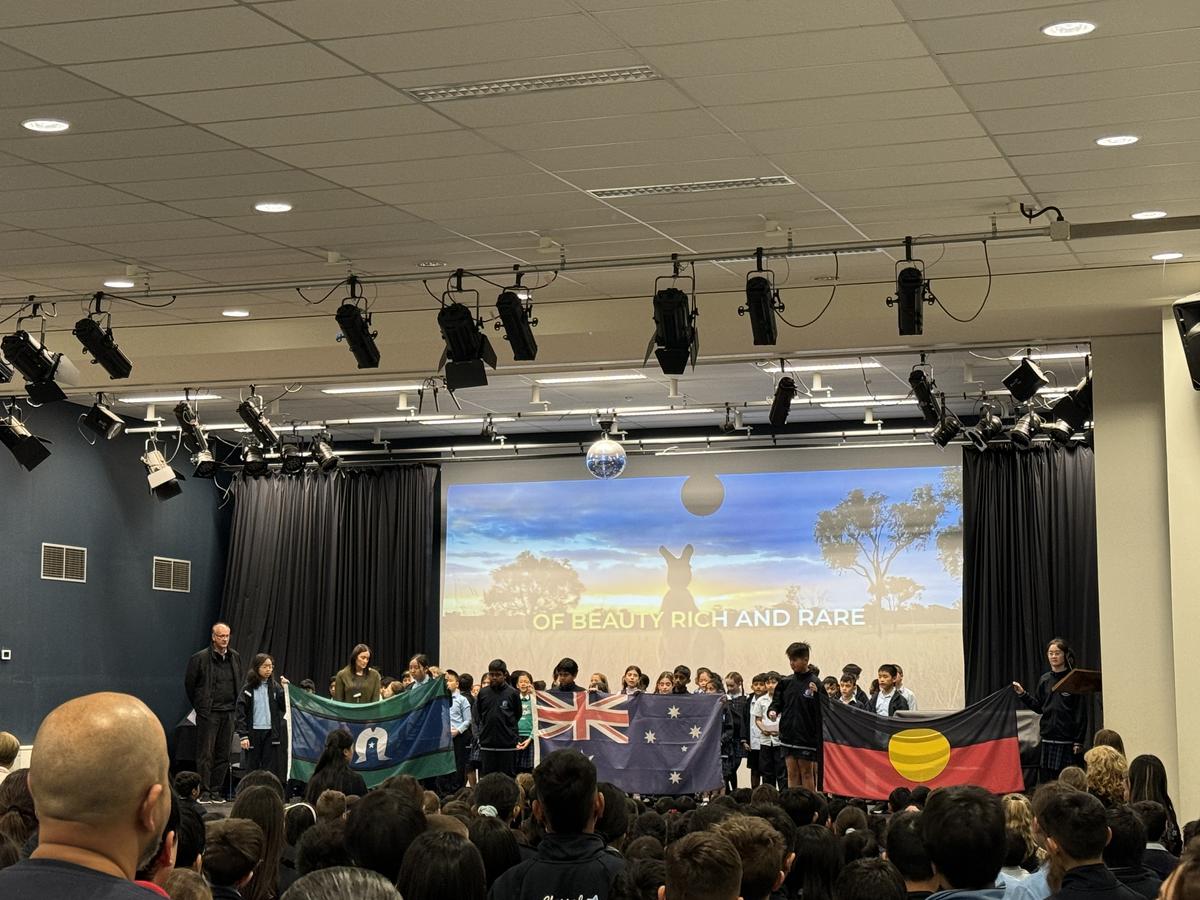
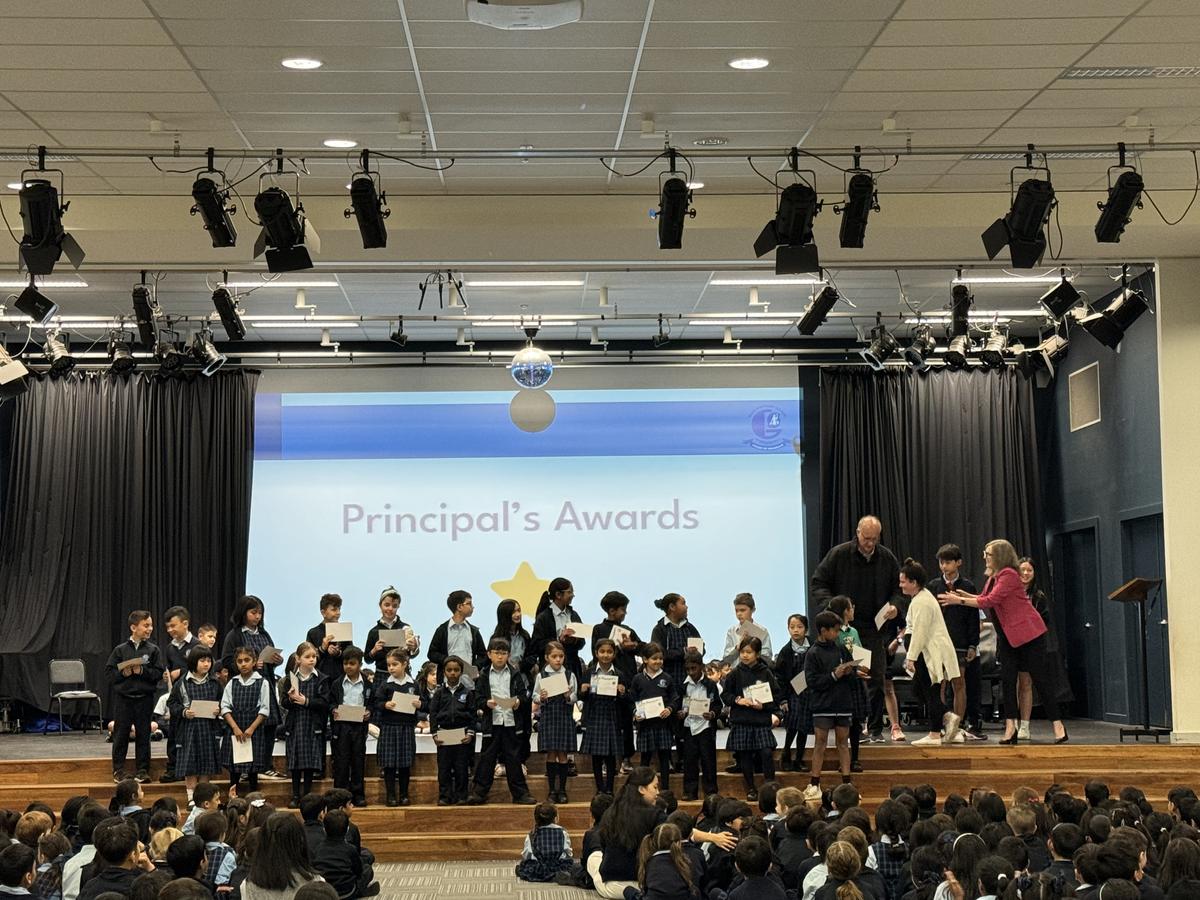


On Monday 22nd of April, the Year 4's, had an assembly about disabilities. We searched up: muscular dystrophy, epilepsy, vision impairment, hearing impairment and last, but not least, cerebral palsy
As we were searching and fulfilling our slide show about cerebral palsy, we learnt many interesting facts. For example we learnt that cerebral means brain and spinal cord, and palsy meant lack of muscle control.
To me the most interesting fact I wrote down was that everyone experiences it differently. This meant that people with cerebral palsy all had levels and varieties of cerebral palsy. Some of the people use talkers while others may be able to talk.
Lydia
I found out that cerebral palsy is the most common disability in Australia. More than 40,000 children have it. 1 in 700 children are diagnosed . The reason I found it fascinating is because many people whose child has cerebral palsy may need extra help at home and at school.
Lily
Remember that even if someone is different to you, we still treat them the same amount of respect as other people. Remember to always be kind to others whether or not they have a disability. Be yourself, may you be the best self you can obtain.
Lydia and Lily
4 Beech
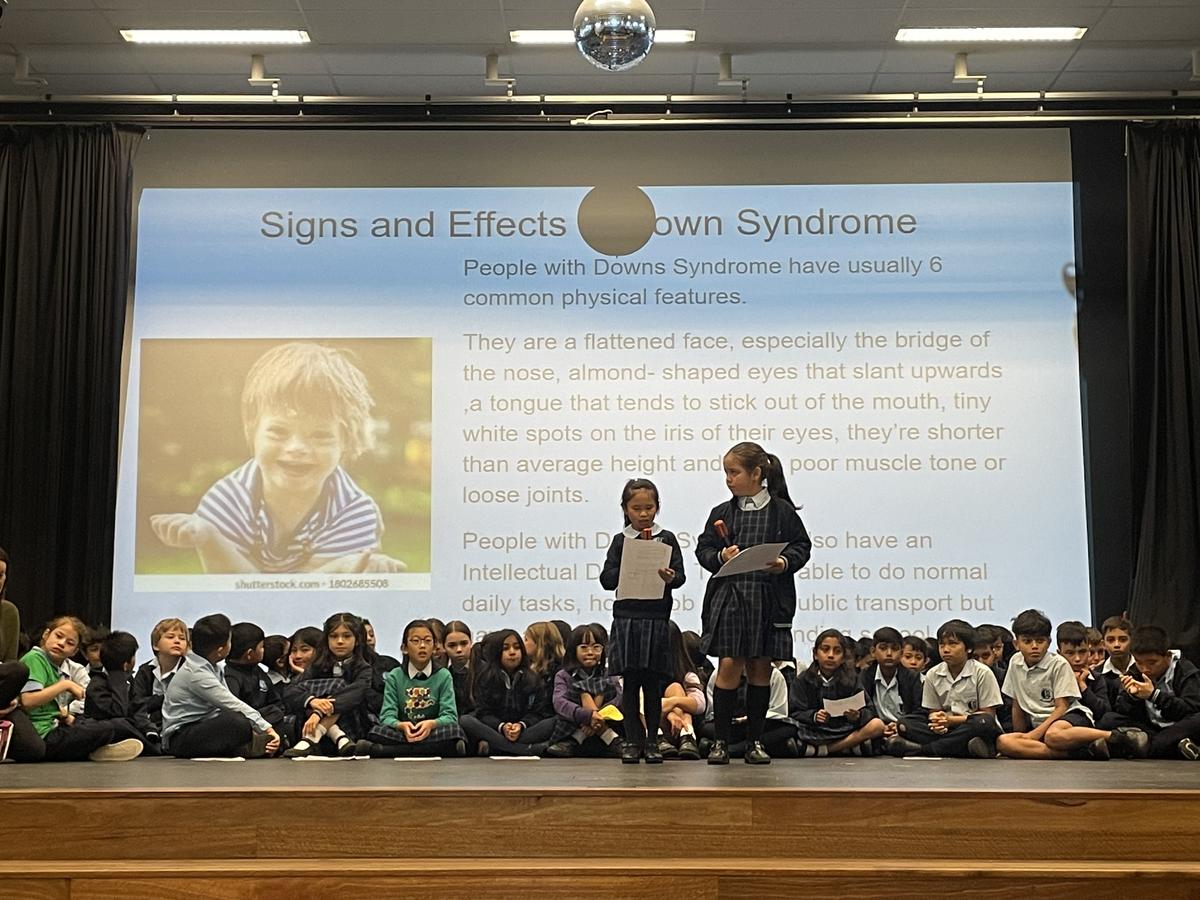
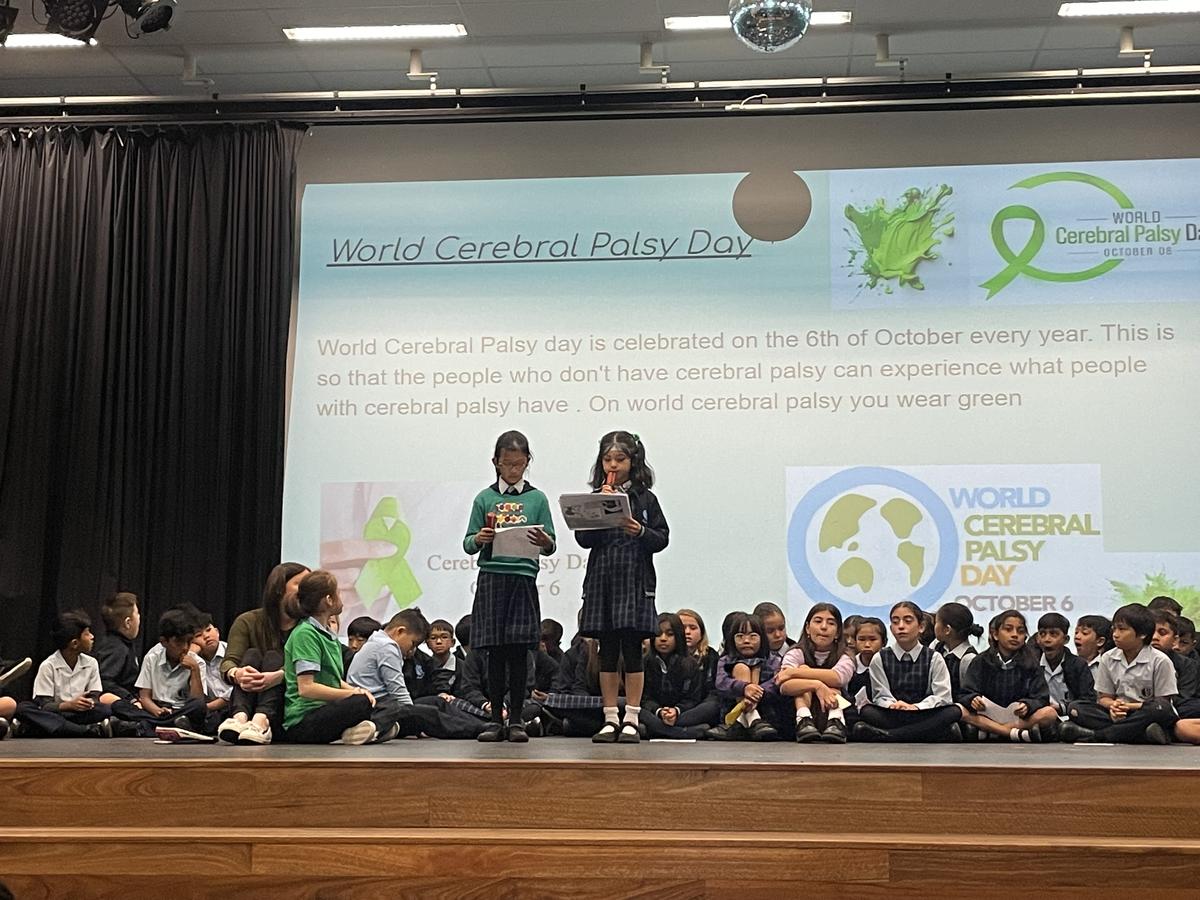


On Monday the 22nd of April 2024, our class presented our Inquiry unit; In someone else’s shoes. We researched what it is like to live with a disability. It was the first whole school Assembly for the year. Of the five disabilities we learnt about in class, we chose to speak about Epilepsy.
Ariella and Stella went up on stage, gathered all their courage and told the whole school about the challenges people face with Epilepsy. The whole purpose of this was to put yourself in someone else’s shoes and know what to do when someone is having a seizure.
Epilepsy is a disruption of electrical activity in the brain which causes seizures.
But not all seizures are the same. During some seizures it looks like the person is staring. Sometimes the person looks confused or the person may drop to the ground and shake. When the seizure is over, the person might be confused, tired or embarrassed and they will probably need to rest. If a seizure is longer than five minutes, an ambulance needs to be called.
If someone is having a seizure, make sure nothing is around them. Put something soft under their head. Eg. A pillow, a jumper or a jacket. Call a teacher for help and stay with them.
Did you know that one in 100 people across Australia have Epilepsy and one in 200 school children live with it.
It was important to share and make people aware. When they were finished everyone clapped and congratulated them.
Thea, Oliver, Minjung and Sacheth
4 McPhee/Petrowski
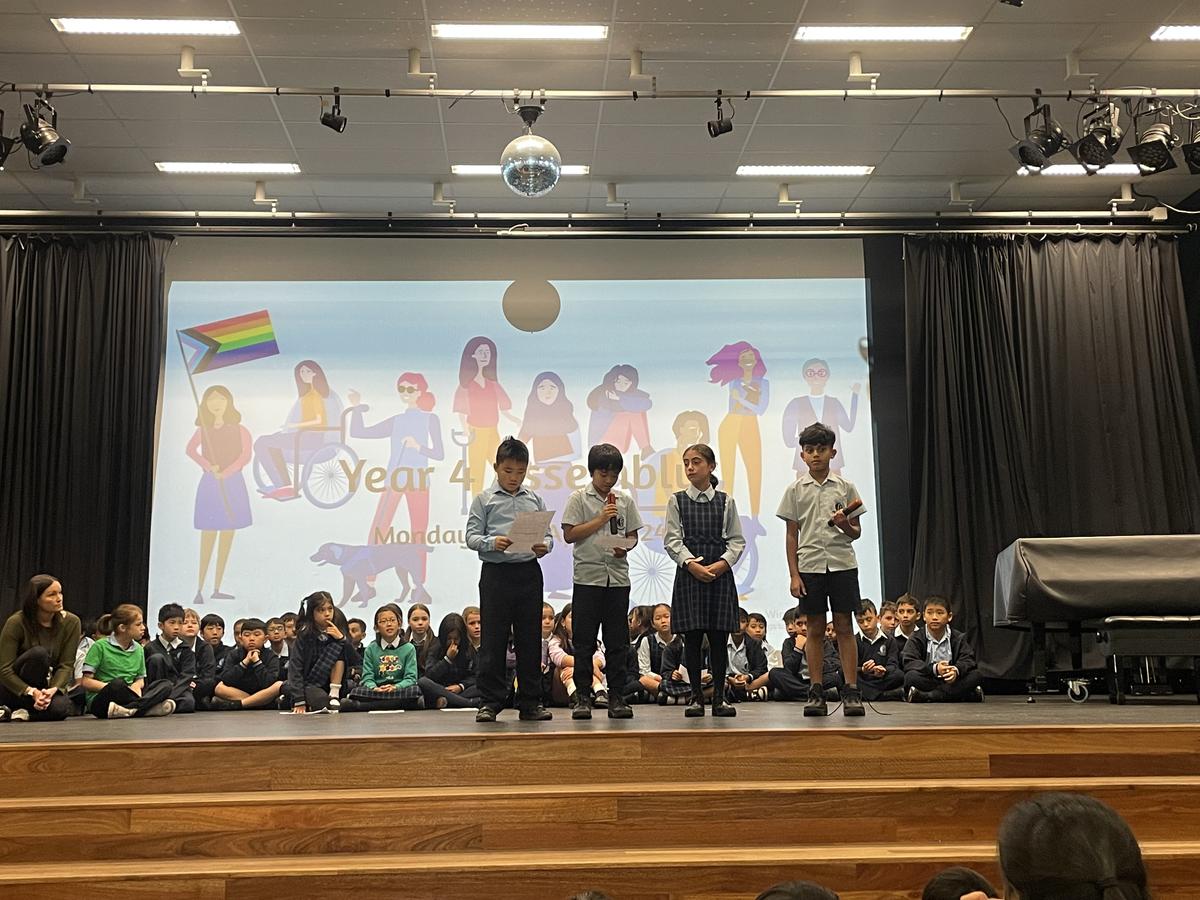
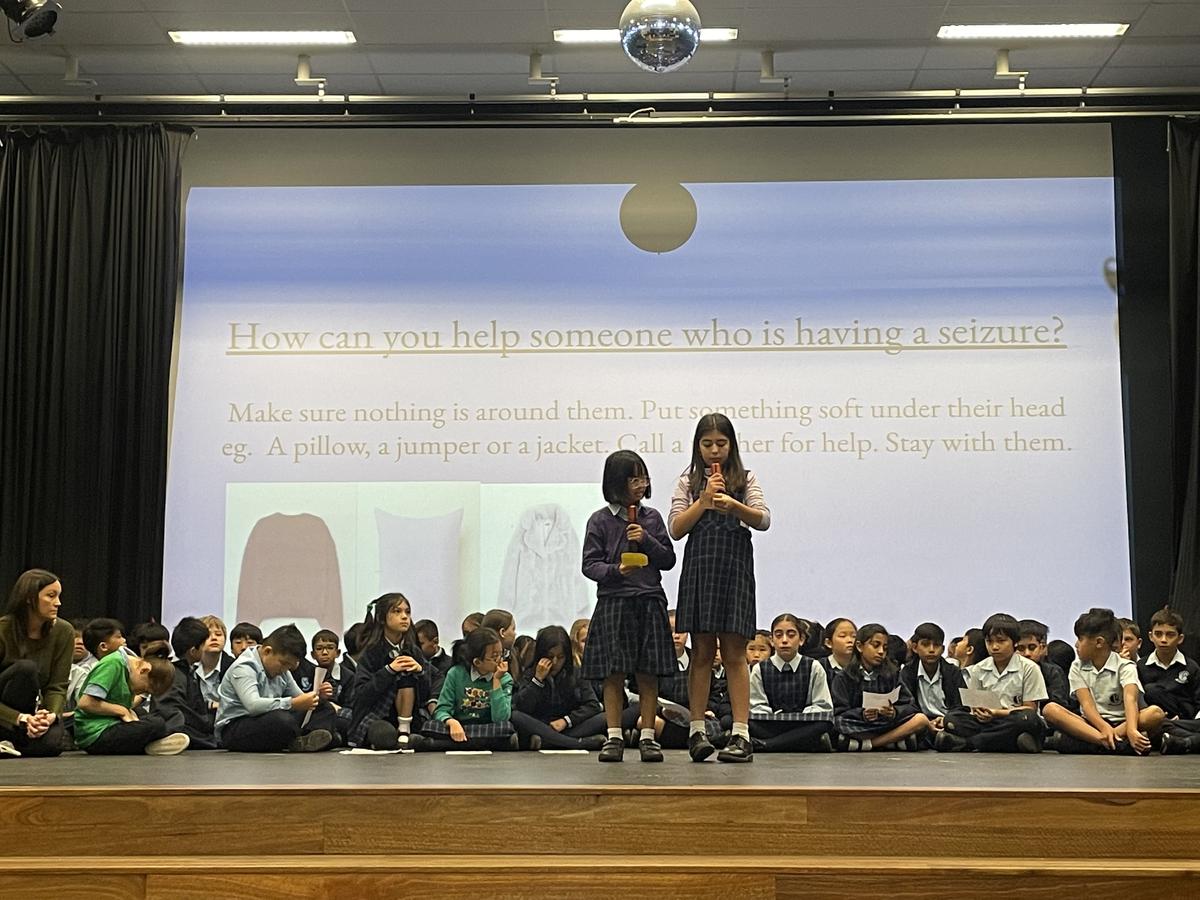


This is Florence and Matilda from 4P writing to you about our experience of the new assembly style and the experience of presenting our research to the school.
We felt nervous, happy and excited to read in front of everyone and it was a good experience. It was hard to do too because the person who was supposed to read got sick and wasn’t available so we had only one day to get ready. The good thing was we got to practice our reading skills in front of a crowd. It was also good to do because we could show how good we are to our parents.
Understanding disabilities is harder than what it looks. Researching gave us a chance to learn about disabilities and how to help them. We also learnt how our empathy can help them too.
It was a lot of hard work and a lot of fun.
Florence and Matila
4 Peperkamp